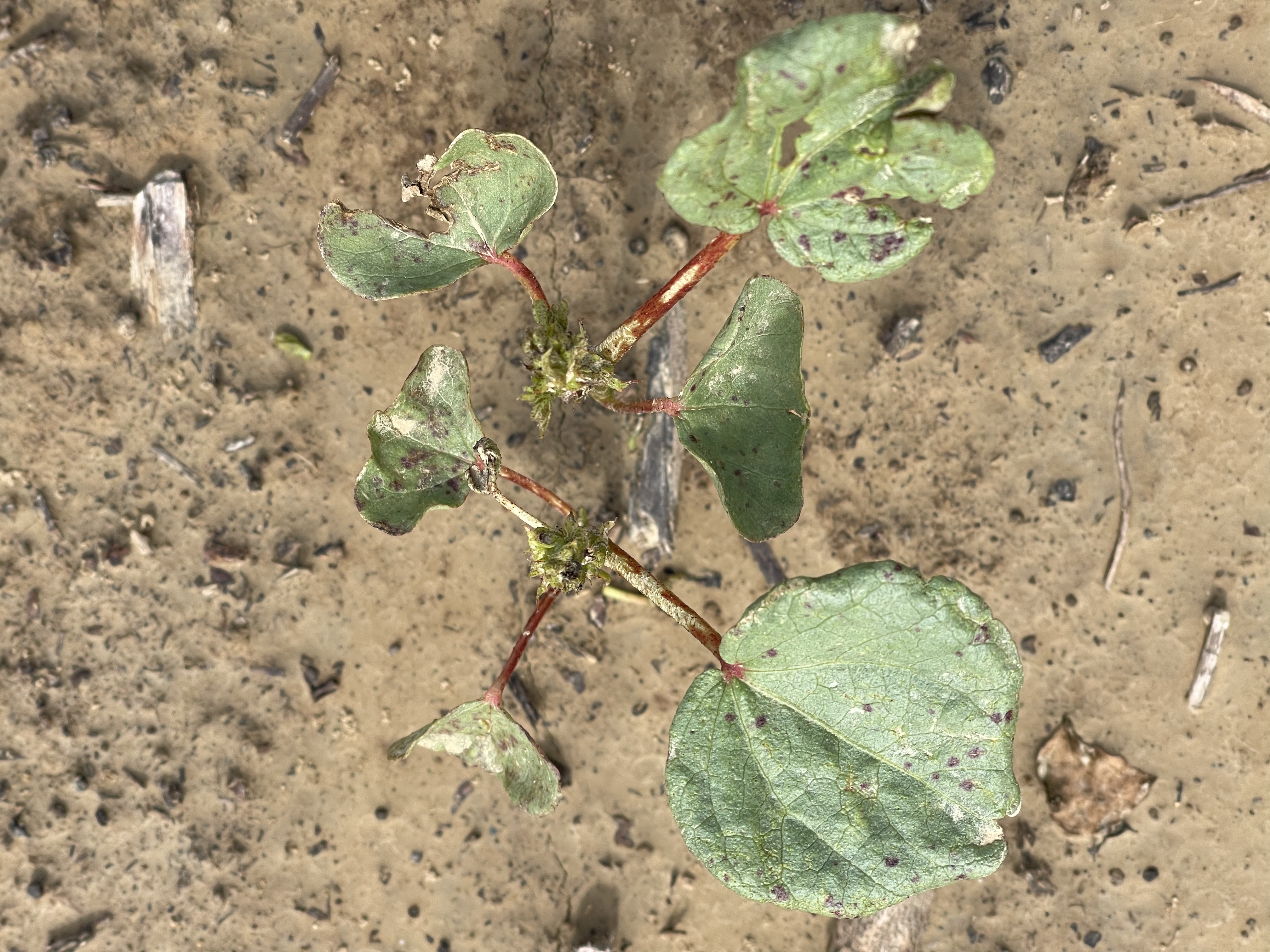Arkansas cotton hoping to outrun high thrips populations
By Sarah Cato
U of A System Division of Agriculture
May 30, 2024
Fast Facts:
- Thrips populations increasing in Arkansas cotton
- Few control options available
- Thrips no longer a problem after four-leaf stage
(492 words)
(Newsrooms: Download photos of thrips damaged cotton.)
LITTLE ROCK – Thrips populations are high in Arkansas cotton and with limited control options available, it’s important growers make the most of each insecticide application and be prepared for reinfestation.

Thrips are small insects that feed on the tender foliage of cotton and typically are only a worry early in the season. However, because of the damage thrips can do to young cotton plants and the recent heavy pressure across the state, it’s important to keep an eye out and treat at what’s known as economic threshold, a research-based density of insects that will cause yield loss greater than the cost of applying an insecticide.
“Threshold really depends on what your cotton looks like,” said Ben Thrash, extension entomologist for the University of Arkansas System Division of Agriculture. “Threshold ranges from two to five thrips per plant. If your plants are stressed, you’re going to want to treat around two thrips per plant. But if your plants are growing well or if they are larger, you can go with the higher end of that threshold. With cooler weather in the forecast, many fields won’t be able to outrun that damage.”
Choosing an effective insecticide for thrips can be tricky, with few options available and reinfestation likely in areas with heavy pressure.
“From what we’ve seen, Acephate isn’t doing too hot. Bidrin is doing OK, but there is some resistance out there so it won’t work as well as it used to,” Thrash said. “Intrepid Edge is really our go-to for thrips, but the residual control provided is very short. So, you’ll kill what’s out there, but you can get a lot of thrips adults that fly into the field after a spray, or if there are a lot of thrips eggs that are laid in the plant, they hatch out after an application and then you’re right back to where you were before the application. Also, if you are planting a ThryvOn cotton cultivar we do not recommend treating for thrips.”
ThryvOn cotton plants include biotechnology that offers thrips resistance.
With this in mind, growers can make the most of their insecticide applications by choosing the correct nozzles and adding appropriate wetting agents.
“We need to be sure we’re not using course nozzles like you would when you’re spraying many herbicides,” Thrash said. “We also need to remember to put a non-ionic surfactant with that product if you aren’t running it with Liberty or Roundup.”
The good news is thrips aren’t a concern for long.
“With the insecticide application, you’re trying to give that cotton some breathing room, just giving it a few days to grow a new leaf and grow out of that injury,” Thrash said. “Once you get to fourth true leaf, thrips are likely not the cause of your problems.”
Insecticide recommendations for cotton in Arkansas can be found in the MP144.
Mention of product names does not imply endorsement by the University of Arkansas System Division of Agriculture.
To learn about extension programs in Arkansas, contact your local Cooperative Extension Service agent or visit www.uaex.uada.edu. Follow us on X and Instagram at @AR_Extension. To learn more about Division of Agriculture research, visit the Arkansas Agricultural Experiment Station website: https://aaes.uada.edu. Follow on X at @ArkAgResearch. To learn more about the Division of Agriculture, visit https://uada.edu/. Follow us on X at @AgInArk.
About the Division of Agriculture
The University of Arkansas System Division of Agriculture’s mission is to strengthen agriculture, communities, and families by connecting trusted research to the adoption of best practices. Through the Agricultural Experiment Station and the Cooperative Extension Service, the Division of Agriculture conducts research and extension work within the nation’s historic land grant education system.
The Division of Agriculture is one of 20 entities within the University of Arkansas System. It has offices in all 75 counties in Arkansas and faculty on five system campuses.
Pursuant to 7 CFR § 15.3, the University of Arkansas System Division of Agriculture offers all its Extension and Research programs and services (including employment) without regard to race, color, sex, national origin, religion, age, disability, marital or veteran status, genetic information, sexual preference, pregnancy or any other legally protected status, and is an equal opportunity institution.
# # #
Media Contact:
Sarah Cato
scato@uada.edu
870-815-9035